We may have all learned in school that plants take in carbon dioxide and release oxygen. They do this so that humans can take in oxygen while they breathe, and let out oxygen. This is basic science. We also know that plants mostly produce oxygen during the day, and the process is reversed at night. This is why it is not advised to sleep under a tree at night – because the carbon dioxide released by the tree can prove to be toxic.
However, some plants tend to produce oxygen at night as well. Planting these “special” specimens can add a certain variety to your garden while also improving air quality at night.
Contents
1) Areca Palm
This plant is also known as the golden cane palm. Areca palm is native to Madagascar and South India. It is a very conservative plant and can grow 6 to 12 m tall. Areca palm is a useful indoor air purifying plant and is one of our top 5 recommendations for the best indoor air purifying plants
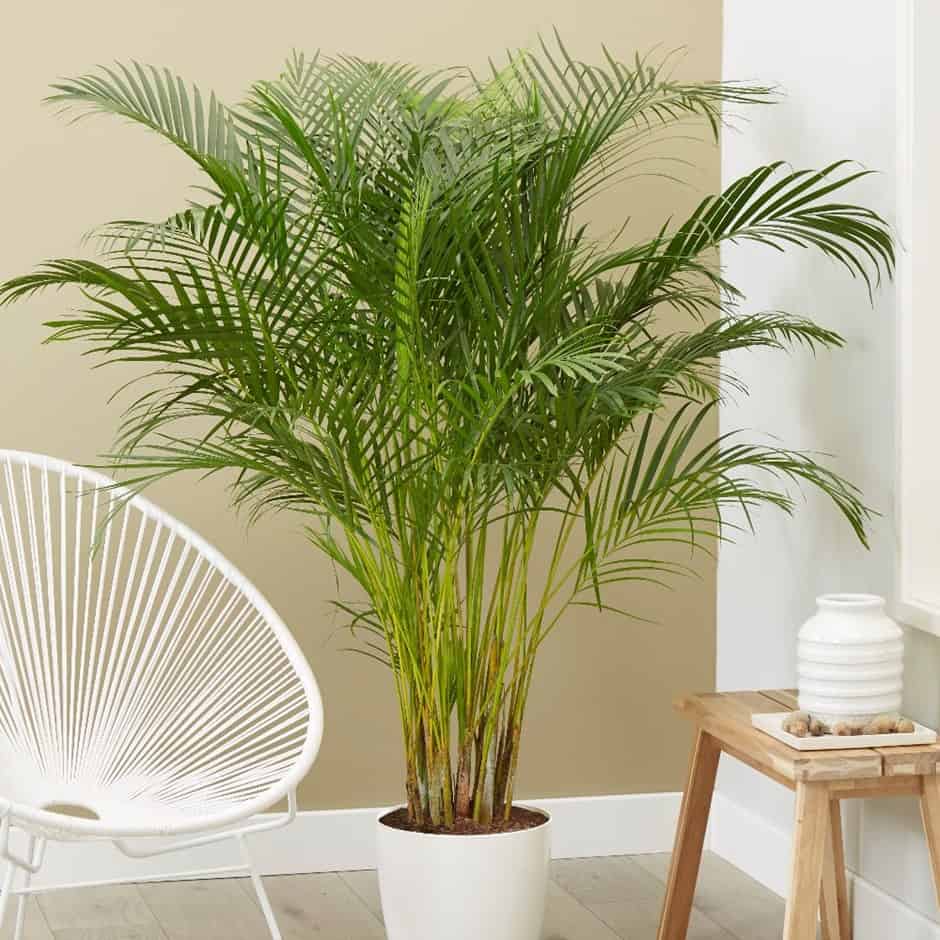
The Areca Palm plant is grown as an ornamental plant in most of the tropical regions and also indoors as it produces oxygen during the night also. This plant is supplies fruit to many birds.
Benefits
Areca palm is mainly used as a pollutant absorber of harmful pollutants such as toluene, acetone, and xylene.
It cleanses the atmospheric air around and also helps with air purification.
The plant also supplies oxygen even during the night by lowering the carbon – dioxide.
Growing Tips
Areca palm requires proper sunlight and well-aerated soil for it to grow efficiently. With an average of 10 years’ lifespan, the plant needs to be repotted regularly every two years with a good amount of nourishment.
2) Neem Tree
Belonging to one of the species in Azadirachta, The neem tree is otherwise called Azadirachta indica or Indian lilac. It is native to India, Nepal, Pakistan, Maldives, Bangladesh, and Sri Lanka, and is one of the Fastest Growing Trees in India The tree is grown in tropical and semi-tropical regions as well as in the southern part of Iran.

The Indian lilac is a fast-growing plant that can reach a height of 15 to 20m and sometimes 30 to 40m. It shreds some or all of its leaves during severe droughts. The fairly dense crown is roundish with its wide-spreading branches that reach a diameter of 20 to 25 m, thus it resembles a Chinaberry in appearance.
Benefits
From the extracts of neem leaves, oil is prepared which can be used as an anti-oxidant.
Neem leaves possess anti-cancer properties that can fight against cancer-causing agents.
They also help in maintaining healthy skin while also acting as a healing agent to all the cracks caused in the skin.
Growing Tips
With proper potting of seeds and having them nurtured in well-drained soil, the seeds should germinate within three weeks.
Neem plants can be grown indoors and after three months be taken and planted outdoors as well.
3) Snake plant
This pant is commonly called as the viper’s bowstring hemp. It is native to West Africa and Congo and is one of the most evergreen plants.
The leaves of the snake plant are stiff and grow vertically as the plant matures the leaves color changes into dark green also having cross banding with light green-gray color. The plant’s leaves grow out to about 70 to 90 cm long and 5 to 6 cm wide. The Snake plant reaches a height of about 6 feet during optimal conditions.
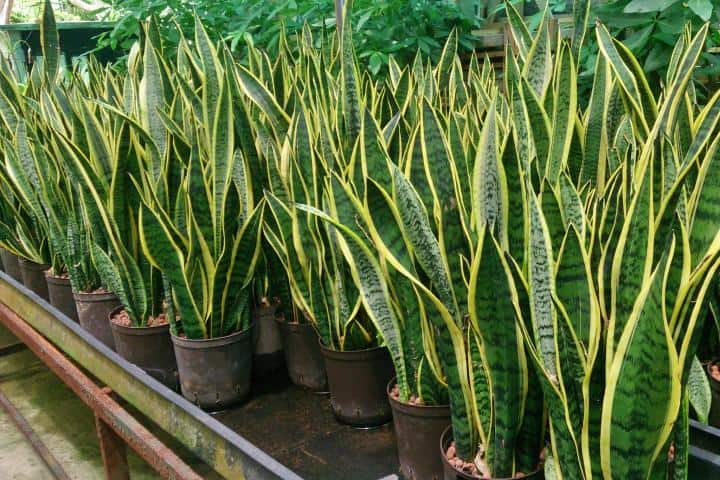
Using crassulacean acid through the metabolism process, the plant takes in carbon – dioxide and gives back oxygen. They have pores in their leaves which are called stomata that help in giving oxygen even during the night that only some plants are capable of.
Benefits
This plant clears most of the amount of CO that cleanses the air as the plant absorbs it and converts it to fresh oxygen.
Also, the plant clears the amount of stress in the room and gives off pleasant vibes.
Growing Tips
This plant does not need water like other plants so just by having watering it with suffice amount once a week will help the plant reach its optimal state.
Snake plants need a good amount of light for optimum growth but can also survive in dim-lit conditions.
4) Aloe vera
Aloe vera is an evergreen perennial plant and a succulent species. This plant originates from Arabia. It is native to tropical, semi-tropical and climates that are arid around the world.
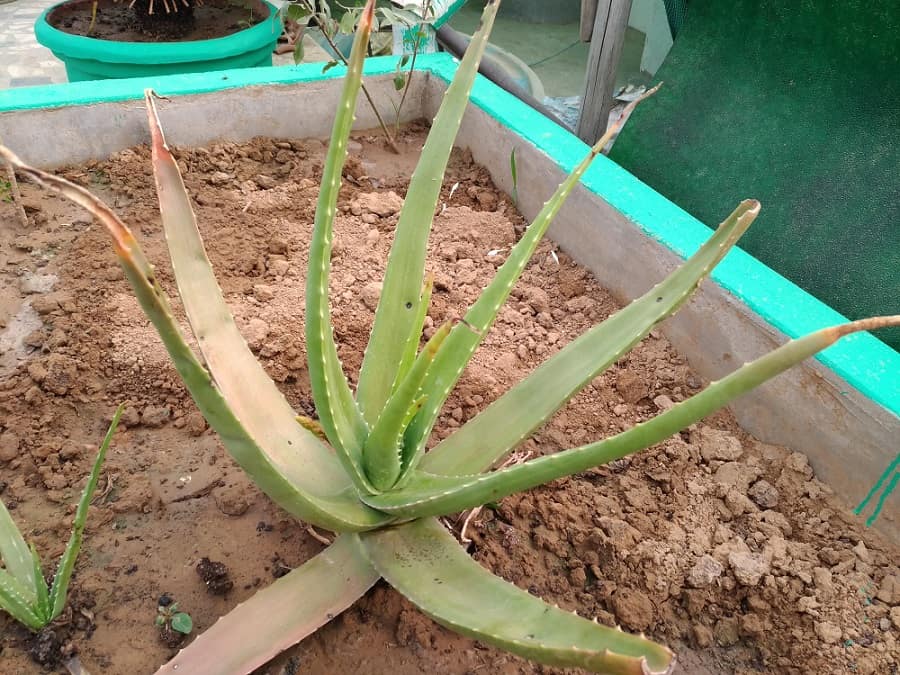
Aloe Vera plants can grow at a maximum height of 60 to 100 cm. As the leaves are fleshy and thick which are green in color, they grow mostly in summer climate while bearing flowers that are yellow in color and grow up to 2 to 3 cm. These plants contain phytochemicals that are acetylated which are used for it. The species was first introduced in China.
Benefits
The plant is used for making cosmetics that help to cure skin diseases and other pimples.
They are used to cleanse the atmospheric air by absorbing the toxins and converting it into pure air.
Growing Tips
The plant requires soil mix in cactus potting with additional building sand.
Aloe vera needs a good amount of soil for it to grow to its optimal growth. But one of the things that it can’t tolerate is that the plant cannot have standing water. It needs well-drained soil for optimal growth.
5) Gerbera
The plant is also called Transvaal daisy. Gerbera is native to South Africa and Asia.
The head of the flower, which is about 7 cm with a diameter of about 12 cm, is widely used as a decorative plant over the plant. They come in colors like white, yellow, orange and red. Gerbera flowers come under the fifth most used flower in the world. The center of the flower is always black but the colors of the petals can differ.
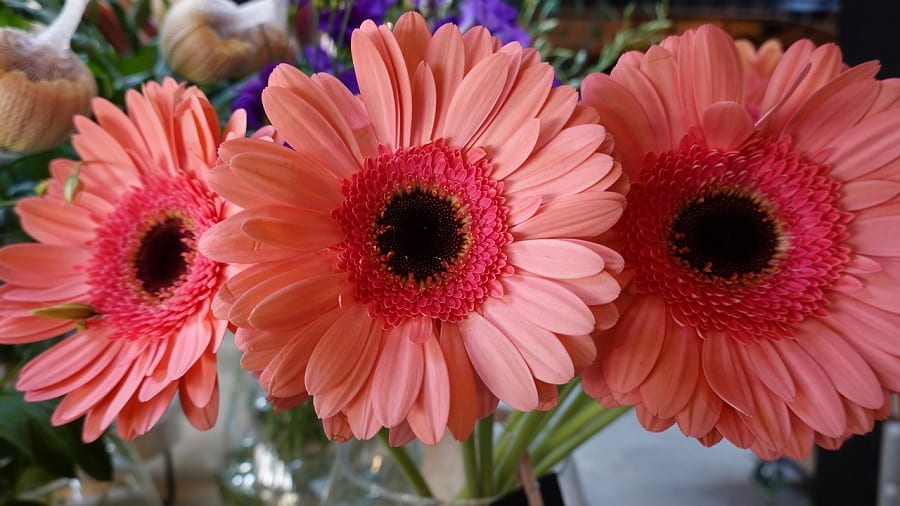
Benefits
It is used to cleanse the trichloroethylene and unwanted benzene content from the atmosphere, making the air breathable.
These plants are vastly used for their attractive blooming.
They are also used to remove stress and create a calm nature since the plant has anti-anxiety properties.
Growing Tips
Gerbera requires a well-drained soil for it to grow to its full length.
The plant needs at least six hours of direct sunlight every day for proper nourishment and also not be affected by the atmosphere.
6) Christmas Cactus
The plant is also called as Schlumbergera. The stems of these plants are similar to that of the leaf pads. They have flowers which come in colors like red, orange and pink. They are mostly found to grow either on trees or on rocks.
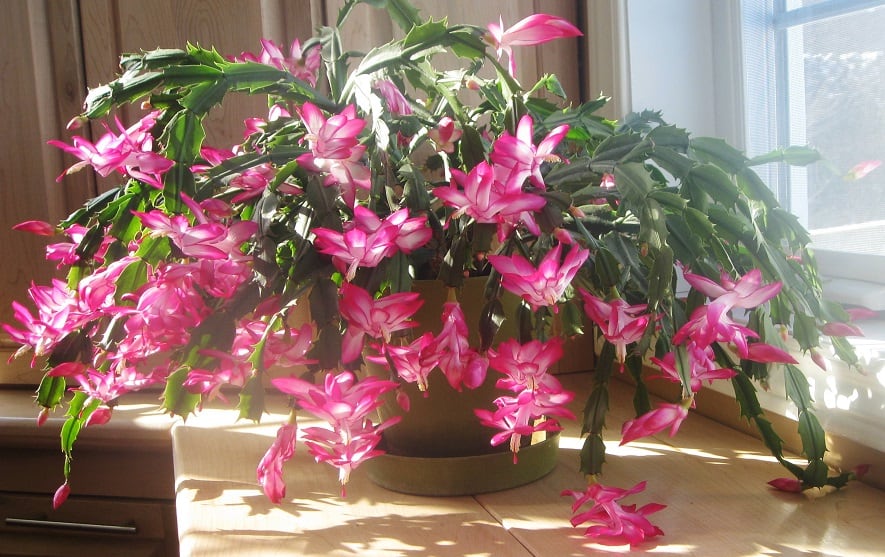
The height of the plant can reach up to 1.2 m. the stem cells are the food-producing organ responsible for photosynthesis. The petals in these plants are mostly 20 to 30 in the flowers. They possess stigma which has about 6 to 8 lobes.
As the flower fertilizes it happens to evolve into a fruit with or without ribs. This plant is native to brazil. With proper planting, this plant can live for as long as 20 to 30 years.
Benefits
The plant, similar to Areca Palm, helps in increasing the oxygen content by absorbing CO2 during the process of photosynthesis.
It is also used to humidify the atmospheric air.
Christmas cactus is also used to increase the healing in the body. During ancient times, the cactus plant was used as a high nutrient content as it increases the glucose by 14 % in the body. The practice is still carried out in some ayurvedic treatments to this day.
Growing Tips
Although the plant is called Christmas cactus it needs to avoid cool temperature and needs more light for the plant for it to bloom.
The plant needs misting regularly (or daily) but overwatering can also kill the plant. Keeping it in warm places is advisable for the plant.
7) Rama Tulsi
The scientific name of this plant is Ocimum Tenuiflorum. It is also a perennial aromatic plant, native to the Southern regions of India.
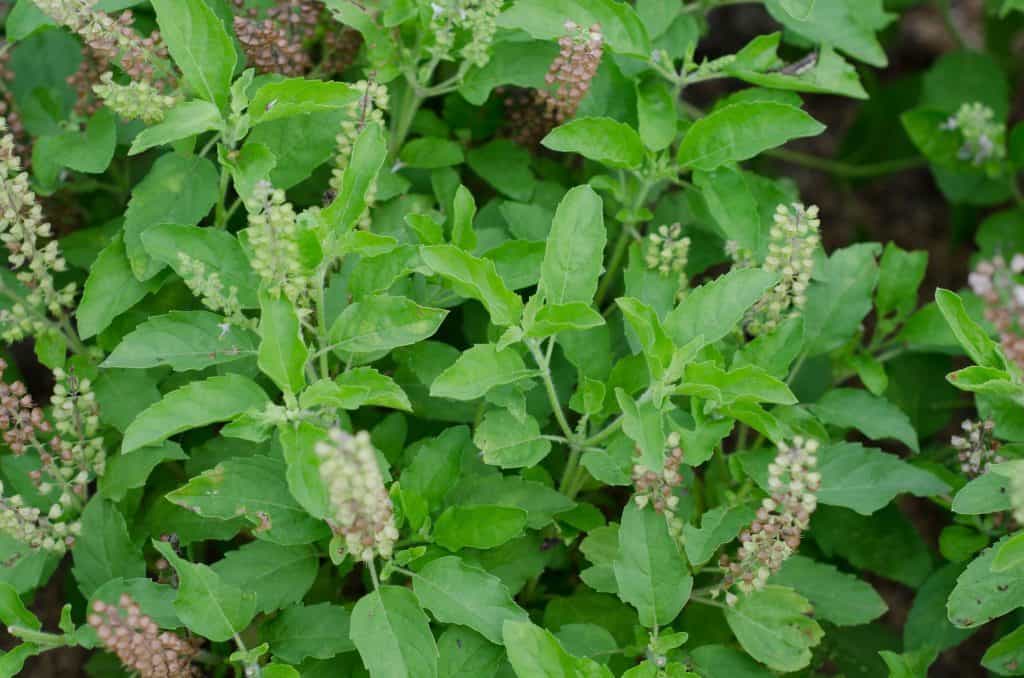
The Rama Tulsi plant is mainly grown for religious and medicinal benefits. In the tradition of Hinduism, the plants are worshipped. The plant is grown at the central courtyard and is considered as a means of worshipping Lord Vishnu. Even during the lighting of lamps rituals, Tulsi plants are worshipped. The plant is erect and ranges from 30 to 60 cm tall. The leaves come in green or purple color and range up to 5 cm. Learn about different types of tulsi
Benefits
The Rama Tulsi plant is used in the treatment of diseases by using the methods of Siddha and Ayurveda.
From the olden days, the leaves of tulsi are used as insect repellants.
They are also used to cleanse the air.
Growing Tips
The flower pot must be filled with a high quantity of soil for it to gain maximum nourishment.
Till the seeds germinate, the soil must be kept moist.
The plant must be placed near a warm and sunny place and must be watered to a moderate level.
8) Peepal Tree
Also called the Sacred Fig, this plant is also native to the subcontinental part of India and indo-china. The tree is considered to have a major significance in the three religions Hinduism, Buddhism, and Jainism. This is the tree where the respected Gauthama Buddha got his enlightenment.

The Peepal tree can grow up to 30 meters high and the leaves are about 10 to 17 cm. They produce small figs which are the fruits of this plant. This tree can live for as long as 900 to 1500 years. The sadhus of the present still meditate under this particular tree.
Benefits
The plant possesses certain qualities that can treat different types of diseases and disorders out of which some of them are asthma, diarrhea and also gastric problems.
It is also used to clean the atmosphere from the air.
Growing Tips
Peepal trees need a good amount of sunlight.
Water must be provided to the plant on a regular basis and care must be taken to avoid over-watering.
It also prefers a loam amount of soil for it to reach its optimal conditions.
9) Orchid
Orchids are flowering plants that tend to bloom with vivid colors and pleasant fragrances. Orchids are one of the largest flowering plants in the world.
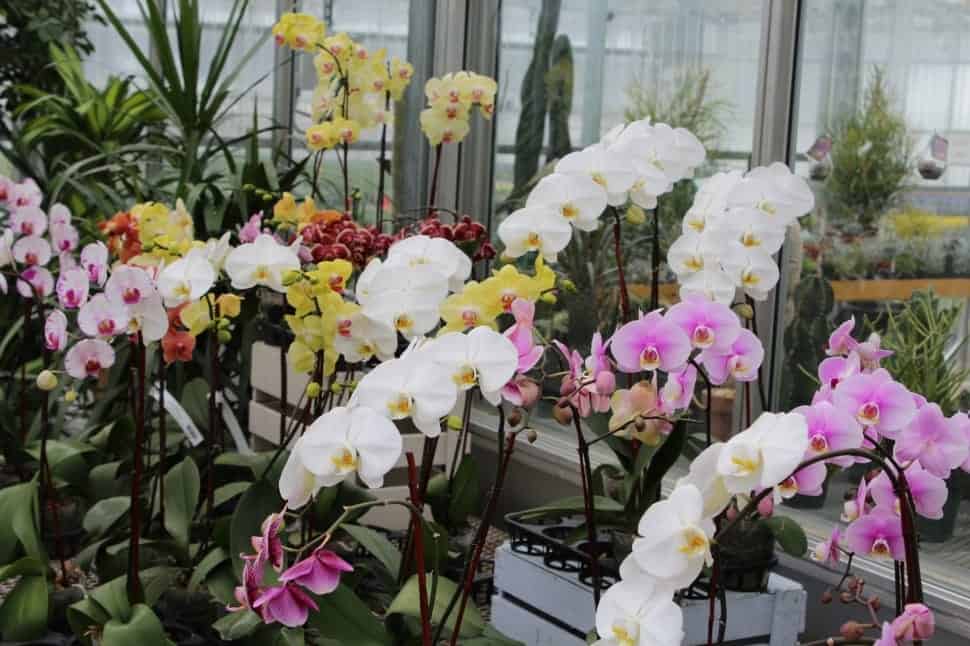
It is a popular belief that the number of bony fish and the number of orchids in the world is always equal. Orchids are easy to identify than the other plants due to their beautiful appearances. They are all perennial herbs that grow to a large number. They cannot have any woody structure but tend to grow in two ways either monopodial or sympodial.
Orchids have flowers but in some cases, they tend to have only one flower. The flower has two whorls or patterns of spirals – outer has 3 sepals while inner has 3 petals.
Benefits
Due to its fragrance, the flowers of the Orchid are used as perfume.
These plants are used to add flavors to food – from the dried seeds these flavors are prepared into some sort of sweet-tasting vanilla essence.
Orchid plants also absorb the amount of oxygen and keep the environment clean.
Growing Tips
By filling the bottom edge of the plant with foam peanuts, good drainage can be maintained.
The plant requires a warm temperature for it to reach its optimal temperature. So it must be kept in a place where exposure to the sun is more.
Those were some of the plants that can produce oxygen at night, while also hosting a range of useful benefits. It is also considered to be lucky
If you found this article helpful, check out our blog, where we talk about all things related to gardening.
Also be sure to head over to ElitechDrip, where we have an offer on gardening tools and drip irrigation kits, especially for you!

